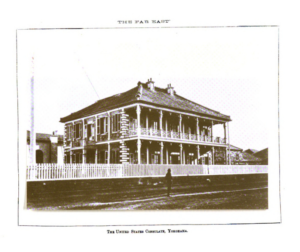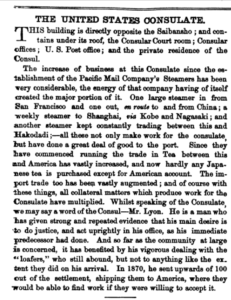As I am thinking about potential topics for the Long Essay due in December, I have stumbled upon some interesting thoughts, two to be precise: the empirical versus the theoretical.
Firstly, a potential topic for my essay would be the discussion of Catholic spaces and general Catholicism brought into the Philippines by Spanish conquistadors versus Protestantism (and possibly other non-Catholic Christian religions) and Protestant spaces brought into the Philippines by Americans.
During my brief research, I found that the first Protestant minister, Arthur Prautsch, served as a missionary in Manila in 1899. He became a local preacher for the Methodist church in Manila for a Bishop named James M. Thoburn. Shortly after this, more missionary groups followed, and by 1916, the Methodists had “50 missionaries and 45,000 converts”, the Presbyterians had 65 missionaries with 15,700 members by 1925, the Baptists had 2,858 converts in 1925, and finally, the Disciples of Christ and the Foreign Christian Mission Society became the “third-largest non-Catholic church in the Philippines with 7,326 members” by 1925.[1]
I found the empirical research, the growing number of followers for Protestant religions to “save” Filipino’s from the “unchristian” and “corrupt” Latin Catholicism highly fascinating. The missionaries’ goal to “save” Filipinos by “preaching the Gospel and erecting churches” became noteworthy for me due to the concept of the “Church” versus churches.[2] This brings me to my second thought, the theory.
The churches built by Protestant missionaries are actual physical spaces. The spaces are physical landmarks where people interact with the space. People go inside a church; they sit on pews and listen to a sermon, light some candles, and they talk and interact with others (to be honest, I am not a churchgoer, so the technicality of what someone does in a church is still a bit lost on me). Nevertheless, what provoked me, is not just the physical space of a church; it is the concept. The Catholic Church versus the Protestant Church. The capitalisation of the letter ‘C’. The discourse surrounding it is a representation of the space rather than a representational (lived and interacted with its physicality) space. In my understanding, Lefebvre’s triad Churches are multi-dimensional spaces, and the way it is talked about can be considered just as powerful as a physical space or building.[3] The conceptualised idea of a Church holds just as much power as the actual building of a church; the conversations held around the Catholic Church versus the Protestant Church. For example, how the Protestant Church found Roman Catholics and its clergy “wealthy and corrupt [whom they] failed to promote morality, closed the Bible to the people, and based the faith also on tradition and not just on holy scripture.”[4]
To summarise my contemplations, I believe this could be an exciting topic of study for my Long Essay, with primary sources ranging from plans of churches to the discourse surrounding Churches. However, it seems quite convoluted, and the topic needs further deliberation.
[1] Jose S. Arcilla, ‘Review: Protestant Missionaries in the Philippines’, Review of “Protestant Missionaries in the Philippines, 1898-1916. An Inquiry into the American Colonial Mentality” by Kenton J. Clymer, Philippine Studies, 36: 1 (1988), p. 106.
[2] Ibid., pp. 106-107.
[3] Henri Lefebvre, The Production of Space (xx, 1974), pp. 38-39.
[4] Arcilla, ‘Review: Protestant Missionaries in the Philippines’, p. 109.

